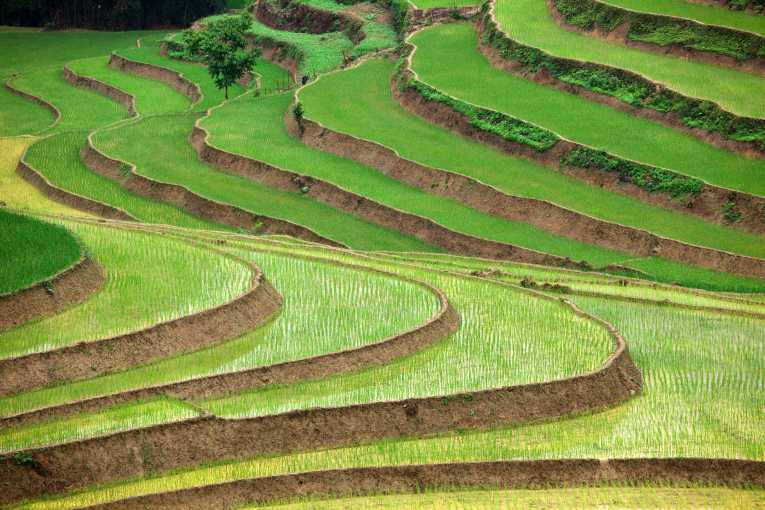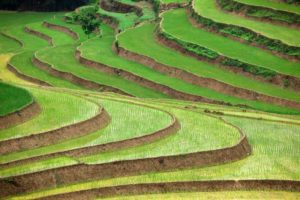How AI is changing Asian agriculture industry
AI • Dec 23,2016

How AI is changing Asian agriculture industry

Asian crops were devastated by a severe drought this year, highlighting the urgent need to stabilise farm output and brace for the consequences of climate change. While the population of Asian region projected to continue growing over the long term, it’s a serious problem that needed to be solved in the near future. The good news is that the answers are starting to emerge from artificial intelligence.
Farming in Japan is different than the United States. The average Japanese farm is just 4.8 acres, and more than 1.5 million small-scale food producers punctuate Japan’s mountainous islands. In contrast, the average US farm size is 434 acres. Japan’s distributed model poses an issue: The price of modern, high-efficiency farm equipment demands a large operation to cover costs. One small farm, however, is turning to homebrew artificial intelligence instead of buying the standard machinery.
Makoto Koike, a Japanese farmer who previously worked as an embedded systems designer in the auto industry, found a common farming problem: sorting produce. The nine categories of spiky cucumbers his family farm produced was time-consuming to sort by hand. After learning how to sort himself, Koike started to build a machine that would identify and sort the cucumbers automatically. He relied on Google’s open source machine learning library, TensorFlow, after learning about the technology when Google DeepMind’s AlphaGo AI beat world champion Go player Lee Sedol.
Before the machine could work, Koike spent three months taking and labelling more than 7,000 images of cucumbers—the algorithms need to learn from examples of good and bad cukes. The machine is 70% effective in real world production, which started in July. The cucumber sorting software can be replicated across Japan, used to sort mushrooms or cabbage or anything else.
Japanese robot farm company Spread plans to grow 30,000 heads of lettuce a day with an entire staff of robots in 2017. By automating steps of the planting process, robots will ‘chop personnel costs by about half and decrease energy expenses by one third’. The company is building expertise for a new factory in Kansai Science City, a research hub that straddles the prefectures of Kyoto, Osaka and Nara. The plant, now under construction, will use artificial intelligence to automate tasks like sowing seeds, replanting and harvesting. The new facility is expected to be completed in 2017.
Spread uses vertical farming, which is a method of urban agriculture that grows produce in vertical stacks indoors and uses LED light. Not only does this technique increase production, but it also reduces waste and eliminates runoff from toxic chemicals such as pesticides.
In Vietnam, AI is in the introductory phase and can be implemented across many verticals to either assist or replace humans in days to come. In agritech, a Vietnamese-built product called Sero.ai helps untrained farmers detect crop abnormalities in advance via an AI imagery engine. It has become a portfolio company under the first cohort of Zeroth, the maiden AI accelerator for Asia.
Sero.ai Diagnose plant’s diseases and identify pests using mobile photos, locate field on the map, measure farmland, follow crop issues throughout the growth cycle, get data on weather conditions in region and compare own productivity with that of nearby farms. It also do a leaf color analysis by detecting nutrition deficiency by analysing leaf colour and other phenotypes, receiving timely solutions from experts and optimizing the use of fertilizers.
A Tel Aviv-based startup called Propsera recently has raised $7 million in new venture funding to build out systems that will monitor and help farmers improve the health of their crops, and optimize their operations. Prospera’s systems, installed in greenhouses or in the field, use a proximal RGB camera and cloud-based software to gather and analyze all the information farmers are missing.
Prospera applies machine learning to report when something important is happening in the field, not every two weeks when a scout walks their fields, he said, but not overwhelming ag professionals with information that isn’t noteworthy. With diseases like those mentioned above, early diagnosis can help farmers forecast yields and make up for expected losses with other growing efforts, or possibly contain the problem and save their crops.
Farming & Agriculture remains a largely untapped area from Pakistan’s startup industry point of view. This is quite a shocking fact seeing as Pakistan relies heavily on its agriculture industry. Local startup Farmers Lab is looking to transform Pakistan’s agriculture industry. It’s currently working on a first product — an IoT device called iFarmer.
iFarmer is split three ways. The first part is the sensor device which will be installed in farms. This device has the ability to judge moisture, pH, humidity, and fertilizer levels. It takes all these readings which are then sent to the associated cloud. The second part is where things get interesting. Once the data from the farms arrives at the cloud server, iFarmer’s Machine Learning and Artificial Intelligence algorithms interpret the incoming data. The third part is the receiving device. Once the data has been analyzed, iFarmer sends appropriate suggestions to the farmers on that particular field.
With growing geopolitical risks, instability in the region, climate change, lack or resources and limited areas that can be used as fields, development of artificial intelligence and machine learning technologies can be practically the only way to feed the population of the region.
Author: AI.Business
If you like our articles, please subscribe to our monthly newsletter:
[mc4wp_form id=”763″]